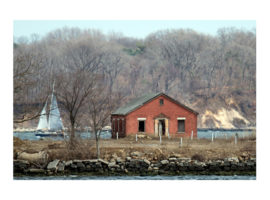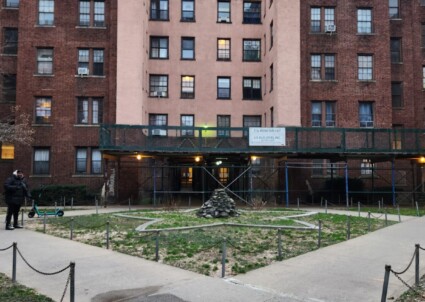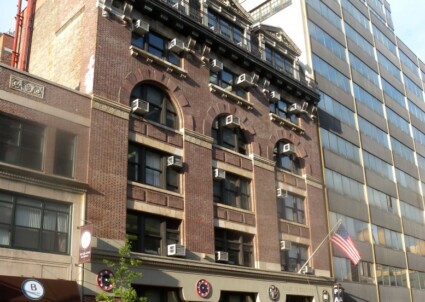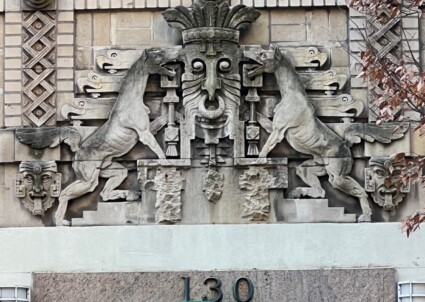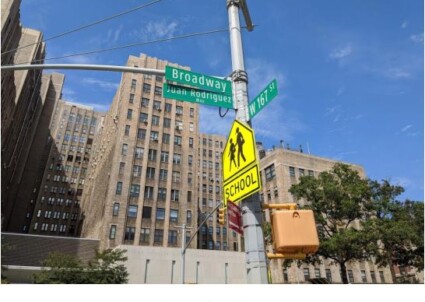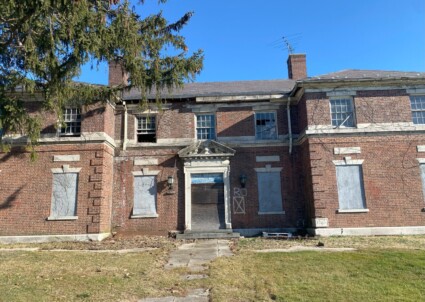Mott Haven, The Bronx
The Bronx is named after Jonas Bronck, a Nordic European settler who arrived in the colony of New Netherlands in 1639. Bronck and his Dutch wife, Teuntje Joriaens, established their farmstead in what is now Mott Haven at the confluence of the Harlem River and Bronx Kill overlooking Randall’s Island. In 1670 much of the area was acquired by the Morris family, who established a large manor called Morissania. The family retained ownership—and the area remained sparsely populated—through the early 19th century. It was the arrival of the New York and Harlem Railroad line, announced in 1840, that finally persuaded the Morrises to embrace suburban development on their estate.
Jordan L. Mott, the neighborhood’s namesake, purchased sizable tracts from the Morris family in 1841 and 1848. Hoping to create a “downtown of Westchester County” (of which this area was then still a part), he laid out streets and building lots and began marketing the new hamlet called Mott Haven. According to Mott’s plan, the southern portion was devoted to industrial uses, including his own iron works, all served by a purpose-built, 3,000-foot canal. The northern section was reserved for tidy residential buildings, protected by restrictive covenants from anything “pernicious to health or noxious or offensive to the neighborhood.” Other developers soon followed Mott to the South Bronx, purchasing large tracts from the Morris family and laying out their own suburbs such as Wilton (subdivided 1857) and North New York (1860)—now both part of the neighborhood of Mott Haven. The Morris family itself entered the development fray, planning the industrial neighborhood of Port Morris.
Development of these tracts was steady, if not as rapid as their promoters may have wanted. Mott Haven proper—which consisted of the area between Third Avenue and the Harlem River—was the most populous, containing a concentration of modest, mostly wood-framed, houses built for local factory workers. By the 1860s the area even boasted a few brick rowhouses, some of which still survive. Much of the area, however, remained in the hands of real estate investors waiting for the area to gain in value. The Panic of 1873 delayed this by several years, although around the same time, in 1874, the South Bronx was annexed into New York City, likely ensuring its eventual development as an urban neighborhood. The arrival of mass transit (the 1887 opening of the Suburban Rapid Transit Company’s 138th Street Station, later part of the IRT Third Avenue Elevated) provided the ultimate spark for the area’s growth. Within a decade or two, most of Mott Haven’s streets were completely built up with a diverse range of buildings, from comfortable single-family rowhouses, to larger multi-family tenements and apartment buildings. Industry also blossomed. Mott’s iron works, now controlled by his descendants, continued to expand. Other manufacturers moved into the area including a remarkable number of piano manufacturers. In fact, by the early 20th century the Bronx had (by one count) 63 piano factories—43 of them in Mott Haven—producing more than 100,000 instruments a year.
Mott Haven’s dense industrial base meant the neighborhood was particularly hard hit by the deindustrialization of New York City in the mid 20th century. Though the South Bronx became a symbol of urban decay and disinvestment by the 1970s, it also remained a vibrant immigrant neighborhood with new institutions, such as the Teatro de Puerto Rico (site 11b), moving into the many surviving historic buildings. The rich history and architectural distinction of Mott Haven has been recognized by the New York City Landmarks Preservation Commission through the designation of three historic districts (including the first in the Bronx) and several individual landmarks.



